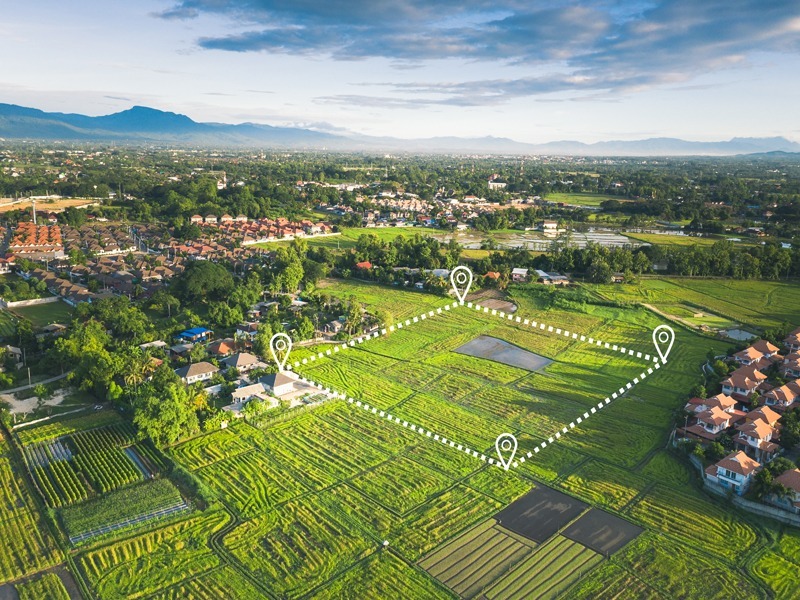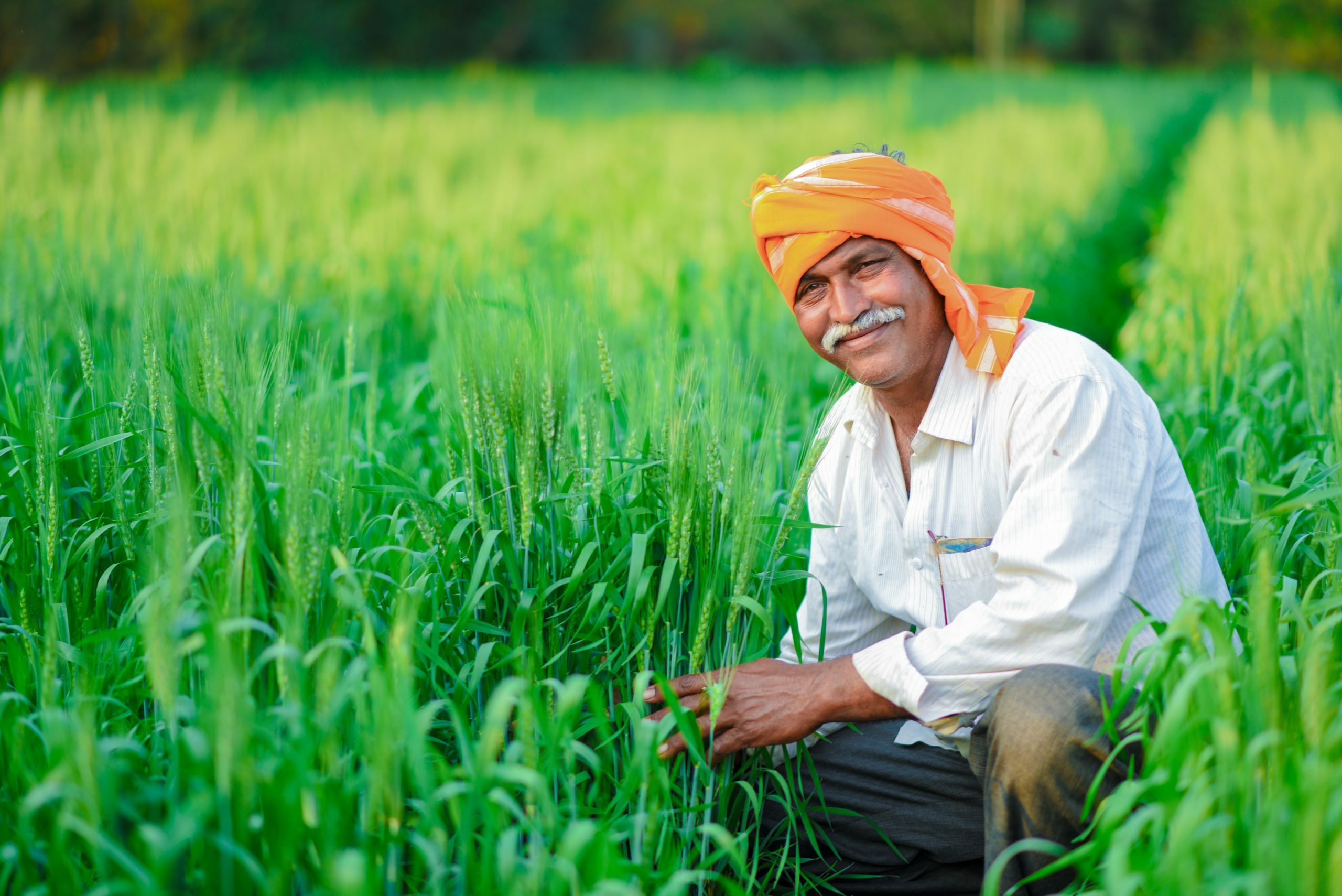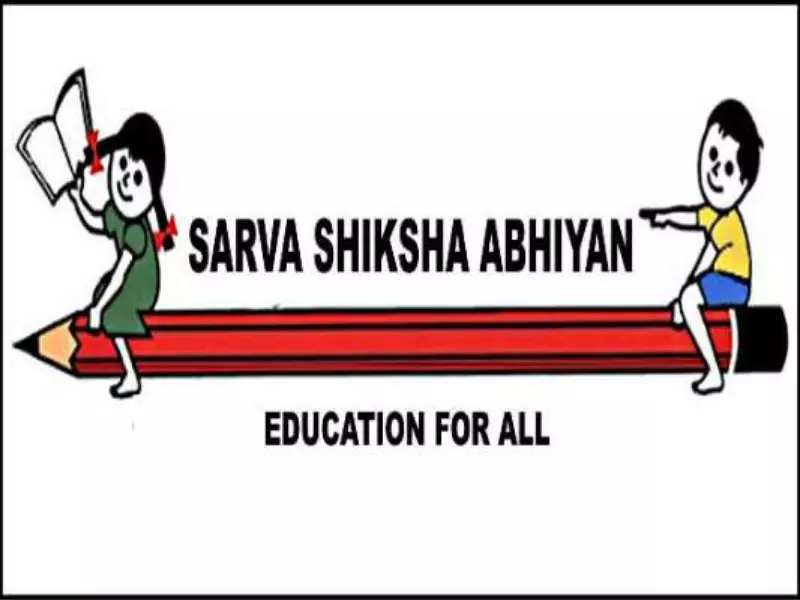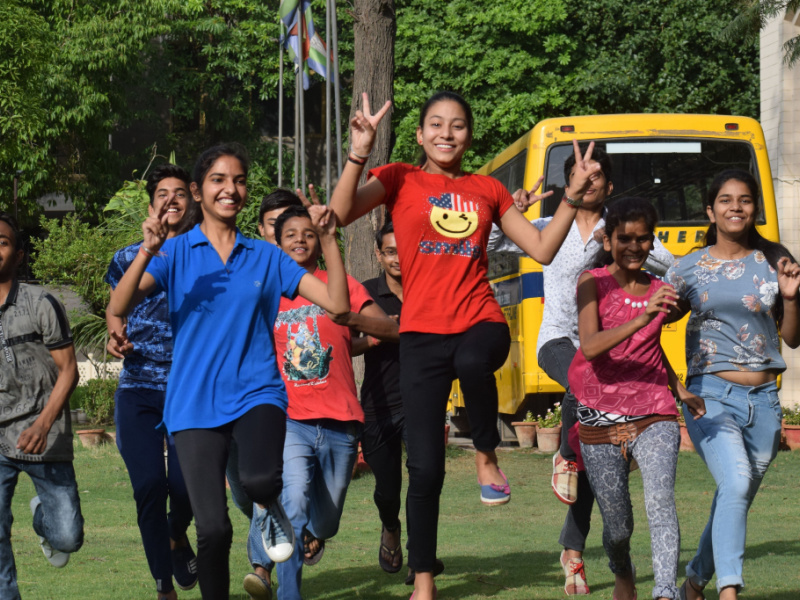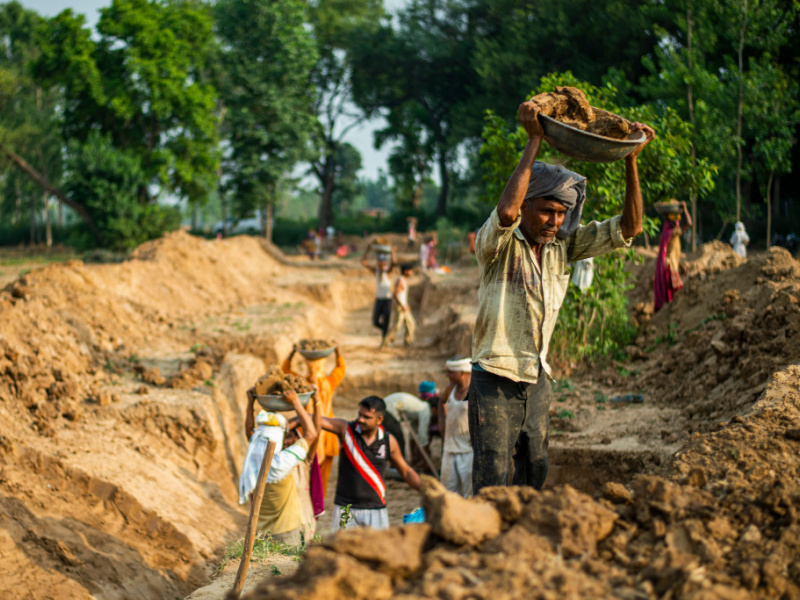
Since February 2006, this program has been combined with NREGS.
On September 25, 2001, the Sampoorna Grameen Rozgar Yojana (SGRY) was introduced, combining the existing EAS (Employment Assurance Scheme) and JGSY initiatives (Jawahar Gram Samridhi Yojna)
The goal was to increase wage employment and food security in rural communities while creating long-term communal assets.
The annual budget was Rs. 10,000 crore, with 50 lakh tons of food grains included.
The monetary component is divided 75:25 between the Centre and the States.
The States/UTs were given food grains at no cost.
Workers receive minimum wages in a combination of five kilograms of food grains and at least 25% of their wages in cash.
All three tiers of Panchayati Raj Institutions have implemented it. However, for the formulation of action, each level of Panchayat was an independent unit.
In a 20:30:50 ratio, resources are dispersed among District Panchayats, Intermediate Panchayats, and Gram Panchayats.
Contractors aren’t allowed.
The main objective of Sampoorna Grameen Rozgar Yojana (SGRY) as mentioned as under:
- The Scheme’s main goal is to create additional and supplementary wage jobs and, as a result, food.
- In all rural communities, food security and nutritional standards must be improved.
- The secondary goal is to establish long-term community, social, and economic assets and infrastructure in rural areas.
- The program will be administered as a centrally sponsored scheme with the Centre and the States sharing the expense of the cash component of the program in a 75:25 ratio. The Centre would provide the entire (100%) funding for UTs under the Scheme. Foodgrains will be distributed free of charge to the states and UTs.
Wage Requirements Under The Programme
- Wages under the SGRY will be paid in a combination of food grains and cash.
- The wages to be paid under the SGRY, including skilled and unskilled labour, must not be less than the State’s minimum wage.
- Both men and women workers will be given equal wages under the program.
- Wages must be paid in the presence of the Village Pradhan/Sarpanch or Panchas on a set day each week, ideally the day before the local market day.
- Suppose the executing agencies fail to pay wages for a category of employment at the rate notified for the relevant employment schedule under the Minimum Wages Act. In that case, the District Panchayat/Intermediate Panchayat shall withhold further release of funds to that implementing agency. They will notify the concerned authority for appropriate action under the Minimum Wages Act against the erring official and the Central Government.
- Suppose the Central Government discovers that the preceding rules are not being observed. In that case, it has the authority to withhold further funding from the program to the district in question.
District Panchayats/DRDAs, Panchayat Samitis, and Village Panchayats receive funds.
- District Panchayats/DRDAs – As per the Annual Action Plan authorized by the District Panchayats/DRDAs, 20% of the money will be reserved at the district level and used by the District Panchayats/DRDAs, preferably in areas suffering from endemic labour exodus/areas of 10 hardship.
- Intermediate Panchayats – The Intermediate Panchayats will receive 30 per cent of the funding. When awarding funding, the proportion of SC/ST population and rural population in the respective Intermediate Panchayat regions would be accorded identical weightage as those in the districts. Annexure-II has the detailed calculating procedure. The work will be carried out following their Annual Action Plan, approved by the Intermediate Panchayat in question. However, while deciding which projects to include in the Action Plan, priority will be given to backward, disaster-prone, or labour-migration-prone areas.
- Village Panchayats – Fifty per cent of the money will be distributed to Village Panchayats to construct supplementary wage employment and demand-driven communal village infrastructure, including durable assets to help the rural poor gain access to more long-term work prospects. Keeping in mind the amended base level allocation as of 31.3.2002, each Village Panchayat receives less than Rs. 25,000/- receives at least Rs. 25,000/-. Following that, each year, the Village Panchayats will be allocated in proportion to their previous year’s allocations.
Issues with SGRY
Funds misappropriation and diversion
From money provided by the federal government, states spent around ’47 lakh on transportation costs. Whereas transportation costs are meant to be funded by individual states using state money, the beneficiaries were denied pay that might have covered 76,058 person-days due to the diversion of central funding to meet transportation costs. SGRY 1 In contravention of the standards that outline the purpose of the allocated central funds, funds earmarked for establishing assets in rural regions were used by government offices to acquire furniture, computers, air conditioners, and renovations. There was no attempt to recover the looted funds from the state governments.
A similar incidence of misappropriation of funds was discovered in Karnataka, where 17,000 tons of rice were stolen out of a total of 14.5 lakh tonnes, enough to feed 34 lakhs people, for 34 days (CAG 2009)
Women and Weaker Sections Have Special Protections
A minimum of 50% of the cash would go to the village Panchayat for infrastructure development projects in SC/ST areas.
The government gives 30 per cent of job chances for women as part of this program.
Individual group beneficiaries of SC/ST households living below the poverty line will get 22.5 per cent of the annual allotment, including food grains distributed both at the district and intermediate Panchayat levels.
Employment for SCs/STs in the BPL group
22.5 per cent of the resources provided to the District Panchayat and Intermediate Panchayat are used for individual or group work for SCs/STs in the BPL category, as previously stated. The following is a list of such works.
- Surplus land, Bhoodan land, and government property are all being developed.
- On private properties belonging to scheduled caste or scheduled tribal communities, social forestry projects such as fuelwood and fodder plantings are carried out.
- Agri-horticulture, horticulture, floriculture, and plantation on private lands owned by SCs/STs living in poverty (BPL).
- For any self-employment scheme, work sheds or infrastructure are required.
- Open irrigation wells or bore-wells for irrigation projects
- Works on pond excavation or re-excavation
- Other long-term income-producing assets
Under the SGRY, some types of work are restricted.
Under the Sampoorna Grameen Rozgar Yojana, some of the works are restricted. The following is a list of works that are restricted.
- Mosques, temples, churches, and gurudwaras are examples of religious structures.
- Monuments, Memorials, Statues, Idols, Arches, Gates, and Welcome Gates, are examples of bridges.
- Higher Secondary School Buildings
- College-related structures
- Roads with a black coating
Muster Lists
Muster rolls are kept individually for each job. It details the money paid to employees and the food grains distributed. In addition, the muster rolls list the number and information of scheduled castes or tribes and women and others who have been hired.
Conclusion
Through increased labour employment in rural areas, this strategy aims to improve food security and nutritional levels and economic and health development, communal, social, and economic aspects.







